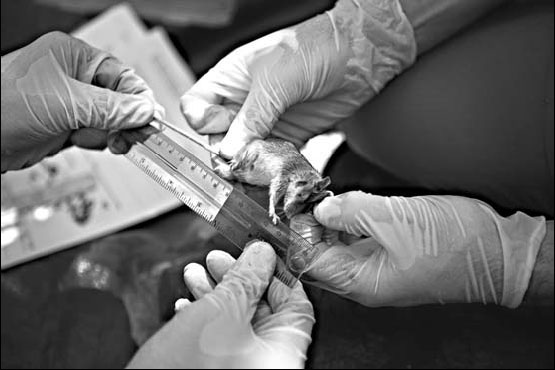As humans alter the landscape, the brains of animals adapt and grow
Updated: 2013-09-08 07:39
By Carl Zimmer(The New York Times)
|
|||||||
Evolutionary biologists have come to recognize humans as an evolutionary force. In hospitals, we drive the evolution of resistant bacteria by giving patients antibiotics. In the oceans, we drive the evolution of small-bodied fish by catching the big ones.
Now a University of Minnesota biologist, Emilie C. Snell-Rood, has found that, as we alter the places where animals live, we may be enlarging their brains.
Dr. Snell-Rood bases her conclusion on a collection of mammal skulls kept at the Bell Museum of Natural History at the University of Minnesota. She picked out 10 species to study, including mice, shrews, bats and gophers. She selected dozens of skulls that were collected as far back as a century ago. A student, Naomi Wick, measured the dimensions of the skulls, making it possible to estimate the size of their brains.
Two important results emerged from their research. In two species - the white-footed mouse and the meadow vole - the brains of animals from cities or suburbs were about 6 percent larger than the brains of animals collected from farms or other rural areas. Dr. Snell-Rood concludes that when these species moved to cities and towns, their brains became significantly larger. Dr. Snell-Rood and Ms. Wick also found that in rural parts of Minnesota, two species of shrews and two species of bats experienced an increase in brain size.
|
A new study suggests that the brains of the white-footed deer mouse and those of several other small mammals are growing. Damon Winter / The New York Times |
Dr. Snell-Rood proposes that the brains of all six species have gotten larger because humans have radically changed Minnesota. Where there were once forests and prairies, there are now cities and farms. In this disrupted environment, animals better at learning new things were more likely to survive and have offspring. Animals colonizing cities and towns learn to find food in buildings and other places their ancestors hadn't encountered.
"We're changing rural populations, too," Dr. Snell-Rood said. As forests get cut for timber or farming, for example, bats may have to travel farther to find food and still be able to navigate home to roost. Big brains may have benefited them as well.
Other scientists not involved in the research hailed it as the first report of significant changes in brain size in animals outside labs. "I think the results are exciting and deserving of much follow-up work," said Jason Munshi-South, an evolutionary biologist at Fordham University in New York.
It should be possible to continue the research in labs, by breeding small-brained rural mammals with their big-brained cousins. By studying their offspring, scientists could study the genes involved in producing different brain sizes.
But the ultimate breeding experiment to test Dr. Snell-Rood's hypothesis may not be possible outside the movie set for "Jurassic Park." "What would be really cool would be to raise populations from 1900," said Dr. Snell-Rood with a laugh, "but we can't really do that."
The New York Times
(China Daily 09/08/2013 page10)
